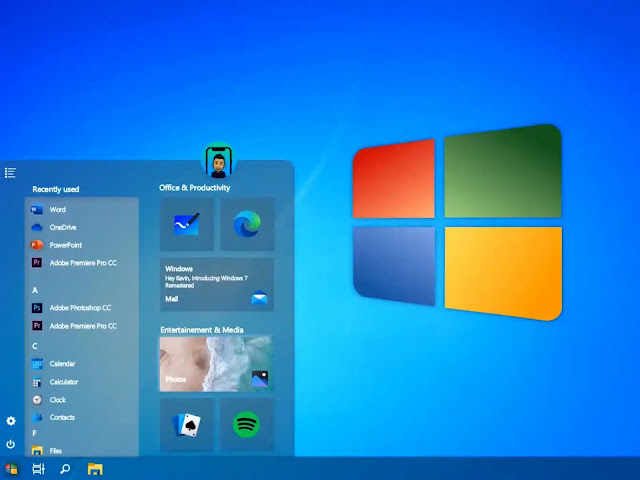Lightroom Classic:
In today's digital age, managing and enhancing photographs has become an integral part of the creative process. Adobe Lightroom, officially known as Adobe Photoshop Lightroom, stands out as a powerhouse image organization and processing software. Developed by Adobe Inc. as part of the Creative Cloud subscription family, Lightroom offers an array of features that empower photographers and enthusiasts to elevate their visual storytelling. In this guide, we delve into the depths of Adobe Lightroom's capabilities and how it can revolutionize the way you handle and enhance your digital images.
Introduction to Adobe Lightroom
Adobe Lightroom is a versatile software that finds its home on various platforms, including Windows, macOS, iOS, Android, and even tvOS for Apple TV users. This extensive compatibility ensures that photographers can seamlessly transition between devices while maintaining a consistent editing experience.
Streamlining Your Workflow
One of Lightroom's primary strengths lies in its ability to effortlessly handle large volumes of digital images. Upon importing, the software's intuitive interface allows you to organize and tag your images, making it a breeze to locate specific photos when needed. Its seamless integration with cloud services further enhances accessibility, enabling you to work on your projects from different devices without any hassle.
Mastering the Art of Editing
Lightroom's editing capabilities are a treasure trove for photographers seeking to bring their visions to life. From fundamental adjustments such as white balance and exposure to advanced techniques like color grading and tone curve manipulation, the software caters to a wide range of editing needs. Its non-destructive editing approach ensures that your original image remains untouched, providing the flexibility to experiment without fear of losing your work.
Correcting and Enhancing
Photographers often encounter imperfections or distortions in their images. Lightroom comes to the rescue with tools like lens corrections and calibration manipulation. These features enable you to rectify issues related to perspective, distortion, and color accuracy, resulting in visually pleasing and accurate representations.
Precision Editing with Local Adjustments
For a more granular touch, Lightroom offers local adjustment tools such as spot removal, red-eye correction, graduated filters, radial filters, and adjustment brushing. These tools grant you the power to target specific areas of your image, allowing for precise enhancements and corrections.
Unleashing Creativity with Transformative Tools
Creativity knows no bounds with Lightroom's transformative tools. Whether it's altering the perspective of an image or creating dynamic compositions, you can achieve remarkable results. The software's transformation capabilities enable you to turn ordinary photos into extraordinary works of art.
Advanced Tips for Maximizing Adobe Lightroom's Potential
In our ongoing exploration of Adobe Lightroom, we've covered the basics of this powerful image processing software. Now, let's delve deeper into some advanced tips and techniques that can truly set your work apart and help you establish a prominent online presence.
Harnessing the Power of Presets
Presets in Lightroom are like shortcuts to achieving specific looks and styles in your photographs. By applying a preset, you can instantly transform the mood and tone of your image. Whether you're going for a vintage feel, a dramatic effect, or a light and airy aesthetic, presets can save you time and provide a consistent visual identity across your work.
Embracing the Graduated Filter
The Graduated Filter tool in Lightroom opens up a world of creative possibilities. This tool allows you to apply adjustments to specific areas of your image by gradually fading them in or out. It's particularly useful for scenarios like enhancing skies without affecting the foreground or adding a spotlight effect to draw attention to a specific subject.
Achieving Seamless Integration with Photoshop
While Lightroom is a powerhouse in itself, its integration with Adobe Photoshop offers a dynamic duo for image editing. When you require more intricate retouching, advanced compositing, or specialized graphic design work, you can seamlessly transfer your image from Lightroom to Photoshop and back. This integration ensures that you have the best of both worlds at your fingertips.
Utilizing Virtual Copies for Experimentation
Virtual Copies in Lightroom allow you to create multiple versions of a single image without duplicating the original file. This feature is a game-changer for experimentation. You can try out various edits, styles, and effects without fear of altering the original image. This level of creative freedom encourages exploration and innovation.
Showcasing Your Work with Slideshows
Lightroom isn't just about editing; it's also about presenting your work in captivating ways. Slideshows in Lightroom enable you to compile your images into visually stunning presentations. Whether you're sharing your portfolio, showcasing an event, or telling a visual story, slideshows add an interactive element that engages your audience on a different level.
Expanding Horizons with Panoramas
Have you ever captured a breathtaking landscape that simply couldn't fit within a single frame? Lightroom's panorama feature comes to the rescue. By stitching together multiple images, you can create expansive panoramas that capture the grandeur of the scene. This technique is a fantastic way to convey the scale and beauty of your surroundings.










